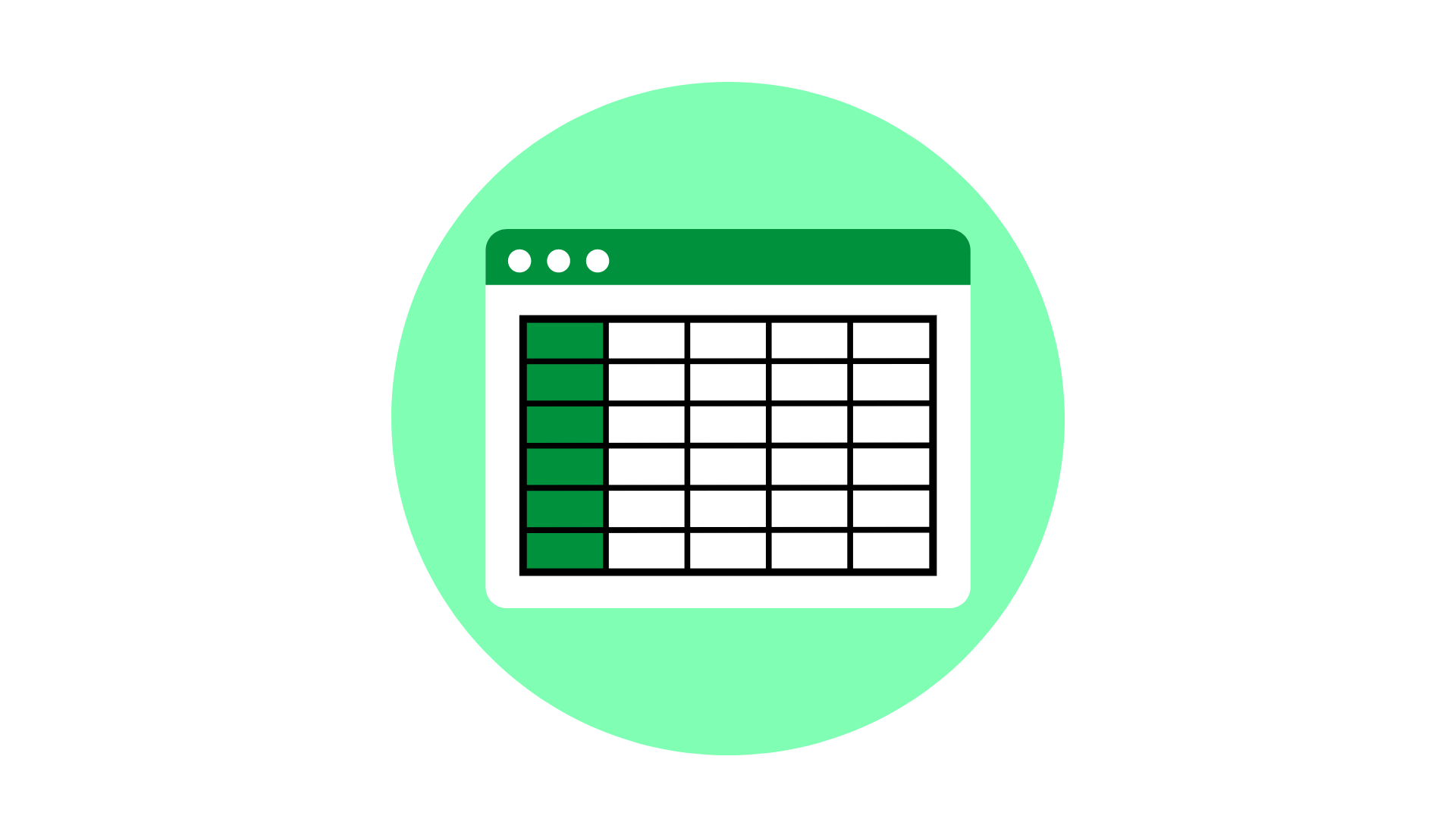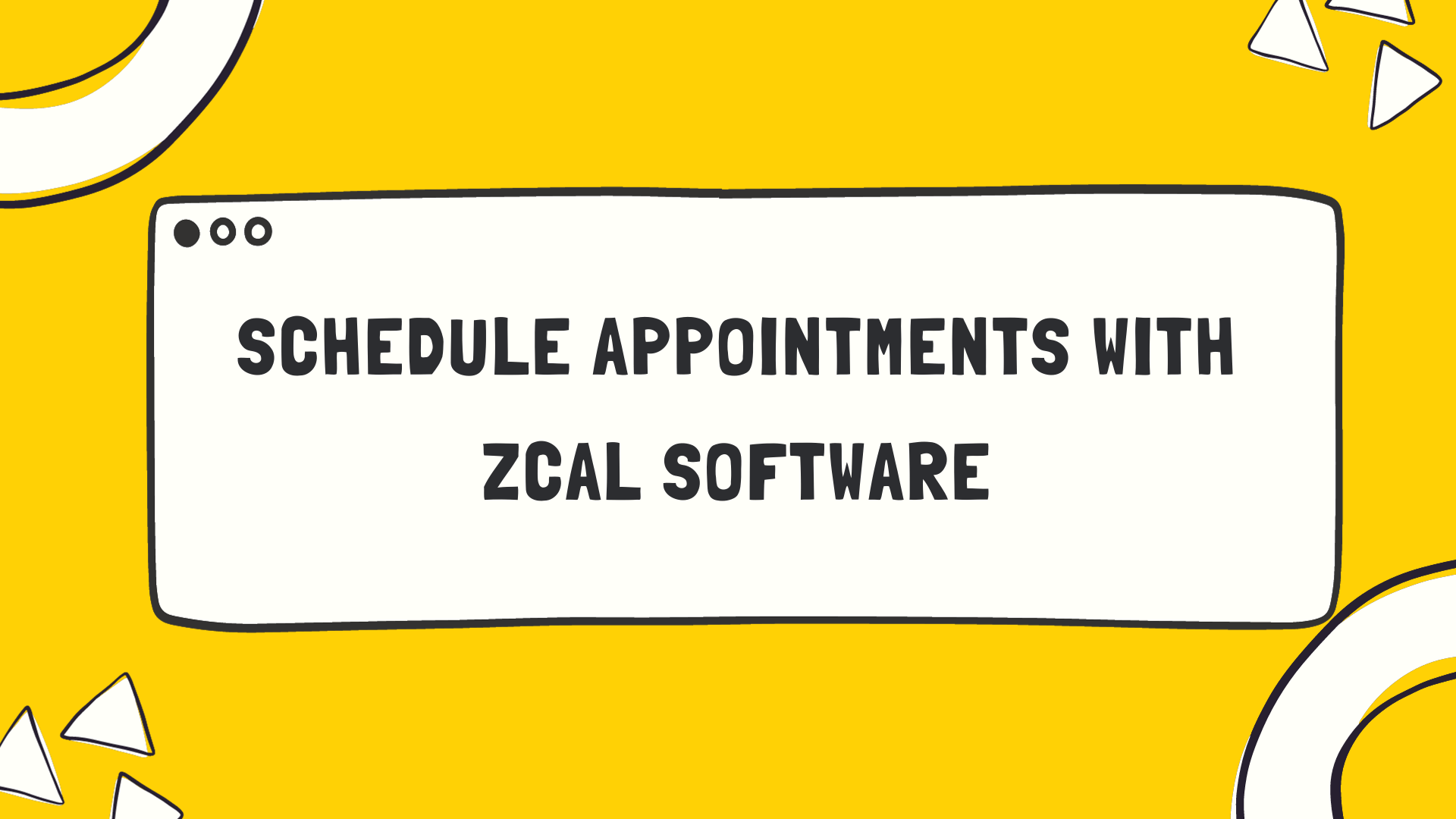Feeling swamped with tasks and struggling to figure out where to start? You may not know that an Impact Effort Matrix, a product management tool, can be your secret weapon in prioritizing tasks.
This blog will uncover how you can harness the power of this matrix to efficiently manage your workload while boosting productivity.
Key Takeaways
- An Impact Effort Matrix is a product management tool that can help you prioritize tasks and manage your workload more efficiently.
- The matrix uses the factors of impact (how much a task helps reach your goals) and effort (the work required to complete a task) to determine which tasks should be given priority.
- By using an impact effort matrix, you can focus on high-impact tasks that require less effort, leading to increased productivity and improved teamwork.
The Importance of Prioritization
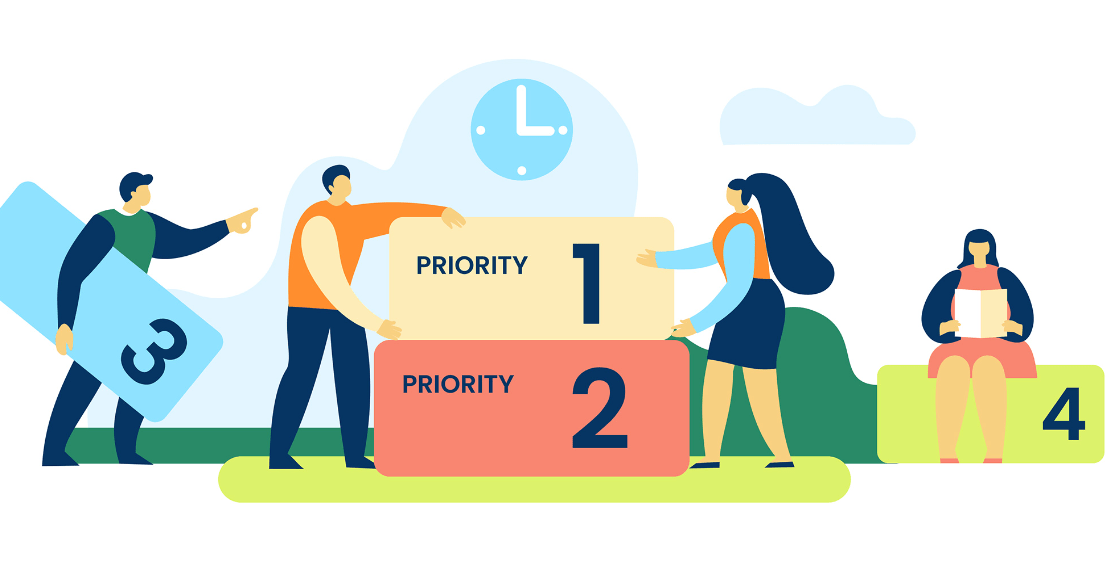
Sorting tasks is key to your success. It can save you time and energy. If all jobs seem important, the impact effort matrix can be a very useful tool. This product management tool will help you choose what task to do first.
Your projects will get managed in less time this way.
Next, let’s talk about how an impact effort matrix works. The tool uses impact and effort to pick which tasks are top priority. These factors help project managers know what order to finish tasks in.
This method boosts productivity and improves teamwork by focusing on high-impact tasks.
What is an Impact Effort Matrix?
An Impact Effort Matrix is a powerful decision-making tool that helps prioritize tasks based on their impact and effort required.
Definition of the matrix
A matrix is a tool that helps make choices. You use it to see which tasks have a high impact and take less effort. The matrix has two axes: impact and effort.
The Impact Effort Matrix is used by project managers a lot. They use it to pick tasks. It shows what jobs have the most effect for the least work. Using this tool can keep you from picking the wrong ideas or spending too much time on low-impact jobs.
The matrix makes it clear which tasks should be your focus points. This decision-making tool also helps manage time better, improve teamwork, and get more done.
The axes: impact vs. effort
The axes in an impact effort matrix are the heart of it. One axis is for impact and the other is for effort. The “impact” part shows how much a task will help reach your goals. High-impact tasks get us close to our goals fast.
Low-impact tasks do not help as much.
The “effort” part shows how hard it is to do a task. It can mean time, money, or work needed to finish the task. Tasks taking more effort need more resources and might slow you down.
This tool helps you see what tasks give big results with less work. This way, you can be smart about where to put your energy first!
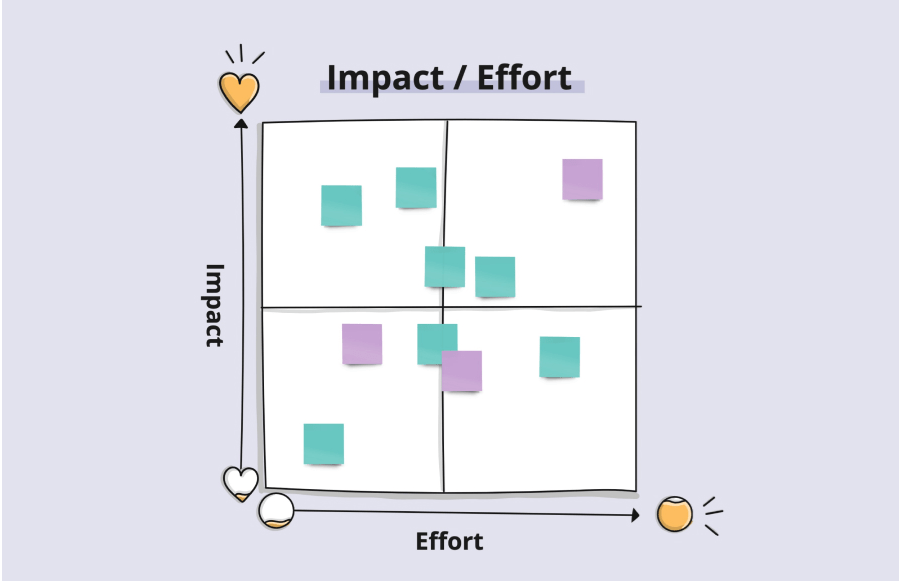
How to Use an Impact Effort Matrix
To effectively use an Impact Effort Matrix, follow these six steps: identify tasks or projects to prioritize, assess the impact of each task on company and customer goals, evaluate the effort required for each task, plot tasks on the matrix based on their impact and effort levels, analyze the results to determine priority tasks, and allocate resources accordingly.
Six steps for using the matrix
Using an impact effort matrix to prioritize tasks is a helpful technique. Here are six steps to guide you:
| Step | Description |
|---|---|
| Identify Your Goals | Clarify the objectives you want to achieve with your tasks. |
| Determine Impact Criteria | Define the factors that will have a significant effect on achieving those goals. |
| Define Effort Criteria | Identify the level of effort required for each task, considering time, resources, and skills. |
| Plot Tasks on the Matrix | Place each task in the matrix based on its impact and effort levels. |
| Analyze Results | Evaluate the distribution of tasks across the matrix and identify patterns or imbalances. |
| Adjust Priorities | Based on the analysis, re-prioritize tasks by focusing on high-impact, low-effort items first. |
Benefits of using the matrix
Using an impact effort matrix has several benefits. It helps project managers prioritize tasks and manage their time more efficiently. By considering factors like the potential impact of a task and the effort required, the matrix helps make clear what the team’s priorities should be.
This boosts productivity and enhances collaboration among team members. Additionally, it allows project managers to focus on high-impact tasks that align with both company goals and customer goals.
Overall, the impact effort matrix is a valuable tool for effective task prioritization and decision-making in technology projects.
Avoiding Pitfalls of an Impact Effort Matrix
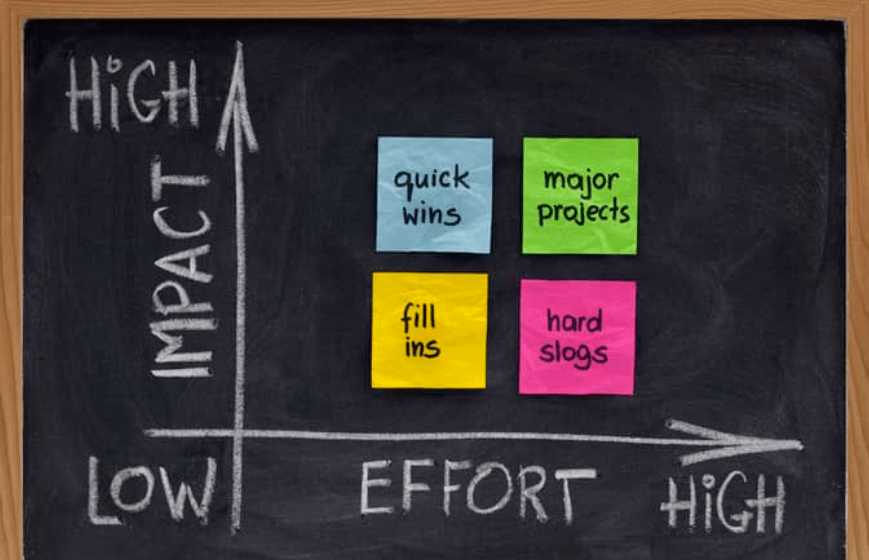
Cognitive biases can impact decision making when using an Impact Effort Matrix, leading to wrong ideas and inefficient prioritization.
Cognitive biases that can impact decision making
When making decisions, it’s important to be aware of cognitive biases that can affect our judgment. These biases are like shortcuts that our brains take when processing information, but they can lead us to make irrational or flawed choices.
One common bias is confirmation bias, where we tend to seek out information that confirms our existing beliefs and ignore evidence that contradicts them. This can prevent us from considering alternative perspectives and hinder effective decision making.
Another bias is the anchoring effect, which occurs when we rely too heavily on the first piece of information we receive when making a decision. This can lead us to overlook other relevant factors and limit our ability to make well-rounded judgments.
Real-life examples
Real-life examples of how an impact effort matrix can help prioritize tasks in the technology industry:
- Company XYZ used the impact effort matrix to prioritize their software development projects. By considering the potential impact on customer satisfaction and the effort required for each project, they were able to focus on high-impact tasks that aligned with their company goals.
- Tech startup ABC implemented the impact effort matrix to manage their workload more efficiently. They found that by prioritizing tasks based on both importance and urgency, they were able to stay focused on key deliverables and meet their deadlines consistently.
- Team DEF utilized the impact effort matrix to make collective decisions about feature development for their mobile app. By considering the impact of each potential feature on user engagement and the effort required for implementation, they were able to make informed choices that aligned with their customer’s goals.
- Software company GHI used the impact effort matrix to identify the root causes of bugs reported by customers. By analyzing the potential impact of each bug on user experience and the effort required to fix it, they were able to address critical issues promptly and improve overall product quality.
- Technology firm JKL applied the impact effort matrix when deciding which new technologies to adopt in their infrastructure. By evaluating the potential impact on business efficiency and scalability, along with the required effort for implementation, they made strategic decisions that helped them stay ahead in a rapidly evolving industry.
Implementing the Impact Effort Matrix in Your Work

To successfully implement the Impact Effort Matrix in your work, follow these best practices and utilize available tools and resources for creating the matrix.
Best practices for successful implementation
To ensure successful implementation of an impact effort matrix in your work, consider the following best practices:
| Best Practice | Description |
|---|---|
| Understand the Purpose | Familiarize yourself with how the impact effort matrix works and why it is important for prioritizing tasks effectively. |
| Define Clear Criteria | Establish specific criteria for assessing impact and effort, aligning them with your company’s goals and customer’s goals. This will help ensure consistent decision-making across projects. |
| Involve the Right Stakeholders | Engage key team members in the decision-making process to gain a diverse range of perspectives and insights. This promotes collaboration and buy-in from those involved. |
| Conduct Root Cause Analysis | When evaluating tasks, dig deeper to identify underlying causes or issues that may affect their potential impact and effort required. Understanding these factors can lead to more accurate assessments. |
| Regularly Reassess Priorities | Priorities can change over time, so regularly review and update your impact effort matrix to reflect shifting circumstances, new information, or evolving goals. |
| Use Reliable Data | Base your assessments on reliable data rather than assumptions or personal biases. This will help you make more objective decisions about task prioritization. |
Tools and resources for creating an impact effort matrix
Creating an impact effort matrix is easy with the right tools and resources. Here are some options to help you get started:
| Option | Description |
|---|---|
| Spreadsheets | Programs like Microsoft Excel or Google Sheets offer templates that can be customized for creating an impact effort matrix. These tools allow you to easily plot tasks on the matrix and calculate scores based on impact and effort. |
| Project Management Software | Many project management software platforms, such as Trello or Asana, have built-in features for creating and visualizing an impact effort matrix. These tools make it simple to assign tasks, set priorities, and collaborate with team members. |
| Online Templates | Numerous websites provide free downloadable templates specifically designed for creating impact effort matrices. Simply search for “impact effort matrix template” to find options that suit your needs. |
| Collaboration Tools | Communication and collaboration platforms like Slack or Microsoft Teams can also be used to create an impact effort matrix. By sharing a document or a whiteboard within these tools, team members can collaborate in real-time to prioritize tasks. |
| Workshops and Training | If you prefer a more hands-on approach, attending workshops or training sessions dedicated to project management methodologies can provide valuable guidance on creating an impact effort matrix. Look for online courses or local events offered by professional organizations. |
Conclusion
In conclusion, an impact effort matrix is a powerful tool that can greatly help in prioritizing tasks. By considering factors like the potential impact and effort required for each task, project managers can make informed decisions about which tasks should be given priority.
This leads to enhanced productivity, collaboration, and focus on high-impact tasks. Implementing an impact effort matrix can improve task management and ultimately contribute to the success of projects.
Frequently Asked Questions
What is an impact effort matrix?
An impact effort matrix is a tool used to assess and prioritize tasks based on their impact or importance and the effort required to complete them.
How does an impact effort matrix help in task prioritization?
By using an impact effort matrix, you can visually analyze tasks and determine which ones have high impact but require less effort, allowing you to focus on those first.
How do I create an impact effort matrix?
To create an impact effort matrix, list your tasks along one axis based on their level of impact or importance, and along the other axis based on the amount of effort required. Then plot each task accordingly.
Can an impact effort matrix be used for personal as well as professional tasks?
Yes, absolutely! An impact effort matrix can be applied to both personal and professional tasks to effectively prioritize and manage your time and resources.
Are there any limitations of using an impact efforit matirx in task prioritization?
While it is a helpful tool, it’s important to note that the accuracy of prioritizing tasks with an impact effort ma


